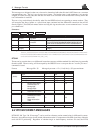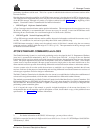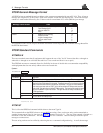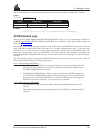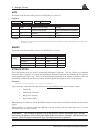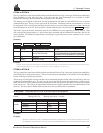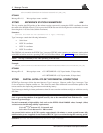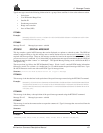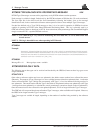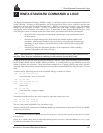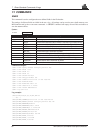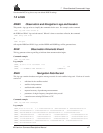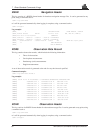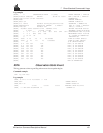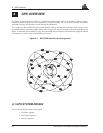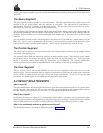
6 Message Formats
44 MiLLennium Command Descriptions Manual
RTCM59 TYPE 59N-0 NOVATEL PROPRIETARY MESSAGE RTK
RTCM Type 59 messages are reserved for proprietary use by RTCM reference station operators.
Each message is variable in length, limited only by the RTCM maximum of 990 data bits (33 words maximum).
The first eight bits in the third word (the word immediately following the header) serve as the message
identification code, in the event that the reference station operator wishes to have multiple Type 59 messages.
NovAtel has defined only a Type 59N-0 message to date; it is to be used for operation in GPSCard receivers
capable of operating in RT-20 Carrier Phase Differential Positioning Mode. This log is primarily used by a
GPSCard reference station to broadcast its RT-20 observation data (delta pseudorange and accumulated Doppler
range) to remote RT-20 – capable GPSCard receivers.
NOTE 1: The CDSA/B log is very useful for monitoring the serial data link, as well as differential data
decode success.
NOTE 2: This log is intended for use when operating in RT-20 mode.
RTCM59A
Example:
$RTCM59,665D43406E76576561674D7E7748775843757D4E646B545365647B7F48
657F504D4D6D425B657D5858606B617A737F7F7F464440727D7156577C65494F4D
4A60497F414D7E4272786D55534362406144705D764D596A7340654B6D5B464375
5848597C52705779466C*57
[CR][LF]
RTCM59B
Message ID = 44 Message byte count = variable
RTCM RECEIVE ONLY DATA
The following RTCM data types can be received and decoded by the GPSCard, however these log types are no
longer transmitted.
RTCM TYPE 2
Quite often a reference station may have new ephemeris data before remote stations have collected the newer
ephemeris. The purpose of Type 2 messages is to act as a bridge between old and new ephemeris data. A reference
station will transmit this Type 2 bridge data concurrently with Type 1’s for a few minutes following receipt of a
new ephemeris. The remote station adds the Type 2 data (delta of old ephemeris minus new ephemeris) to the Type
1 message data (new ephemeris) to calculate the correct pseudorange corrections (based on the old ephemeris).
Once the remote receiver has collected its own updated ephemeris, it will no longer utilize the Type 2 messages.
The GPSCard will accept and decode
RTCM Standard Type 2 messages, when available and if required. However,
the GPSCard no longer transmits Type 2 messages.
Type 2 messages are variable in length, depending on the number of satellites being tracked by the reference
station.



